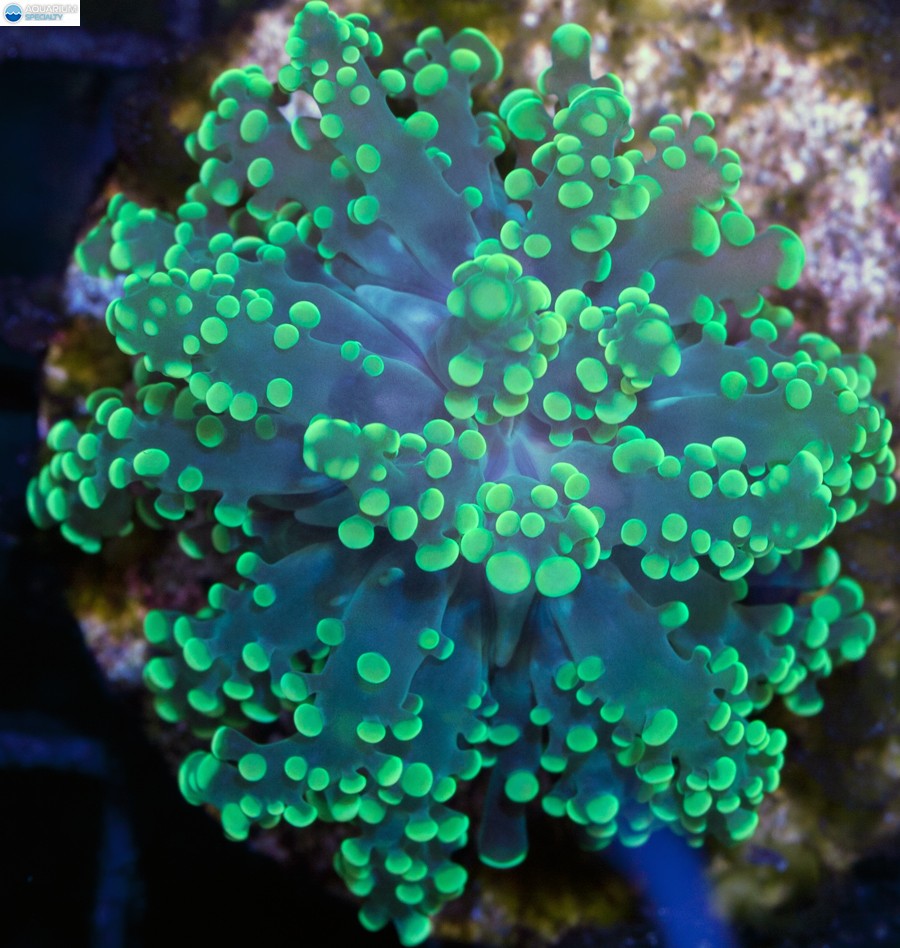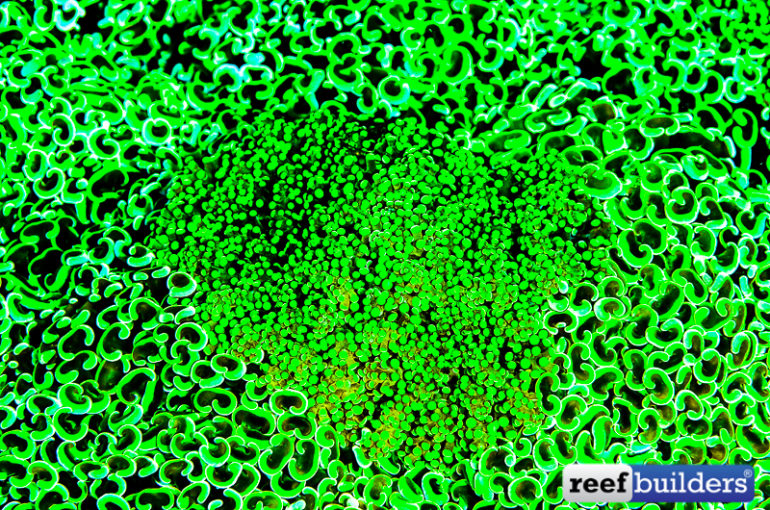An article published in the Journal Nature has found that mesophotic corals may use their fluorescence to lure and capture zooplankton. In the past, fluorescence has been linked to many factors from screening harmful radiation to facilitating photosynthesis in corals, but for deeper living, highly fluorescent specimens both those theories are unlikely. Mesophotic corals found at 30-150 meters may still produce some energy via symbiotic zooxanthellae but as light diminishes and shifts to the blue spectrum, they increasingly turn to their other nutritional strategy – prey capture.
Ben-Zvi, O., Lindemann, Y., Eyal, G. et al. used Artemia and fluorescent orange and green cues versus clear cues in the lab. They found that for Brine shrimp at least, they were naturally drawn to the fluorescent cues versus clear ones, and fluorescent pigments that are excited by blue light. Mysids from the Red Sea were trialed next – a more natural prey item – and in tests, they were also drawn to green fluorescent pigments, only they avoided fluorescent orange. The team then set up an in-situ test at 40m depth and found that there, natural zooplankton assemblages including copepods were more attracted to fluorescent orange and green cues than a control, reflective cue.

Fimbriaphyllia paradivisa
The team then moved to the Branching Frogspawn coral, Euphyllia (now Fimbriaphyllia) paradivisa, also found at 40m. They found that both green and yellow specimens caught more zooplankton when glowing under blue light, than red light which doesn’t make the glow. But they also found that Green paradivisa caught more zooplankton than yellow paradivisa, and that this manifested itself by a lesser abundance of the yellow morph in the wild. Fluorescent corals living at depth were also more likely to open their polyps and feed throughout the daytime and capture more zooplankton overall than non-fluorescent examples of their species living shallower and in more light.



